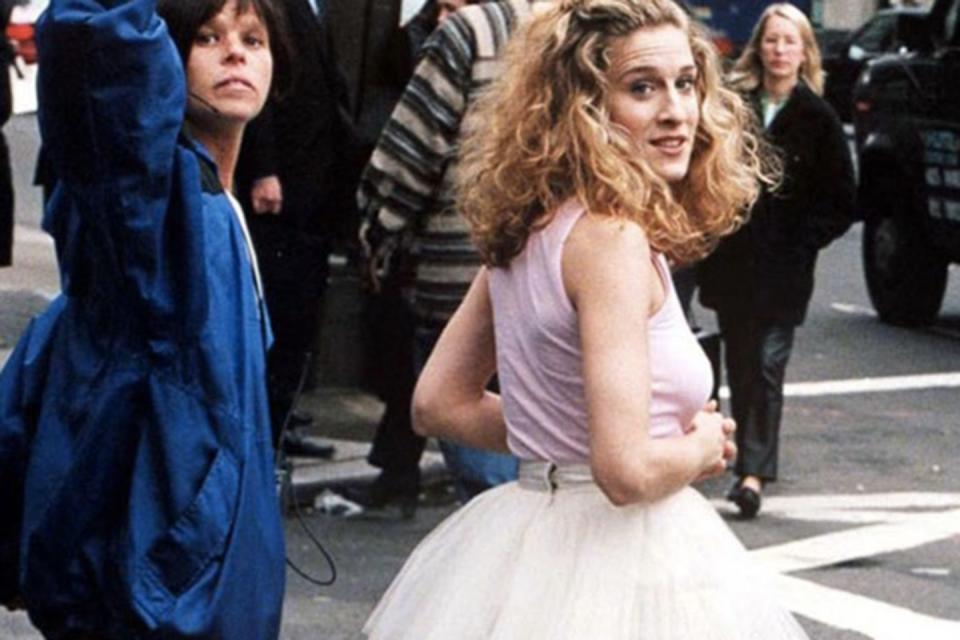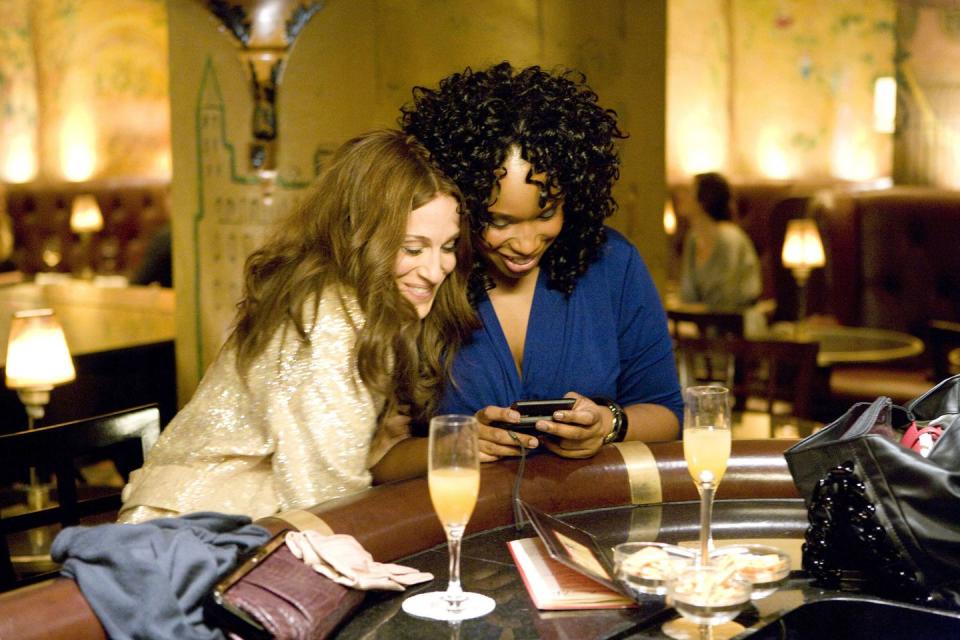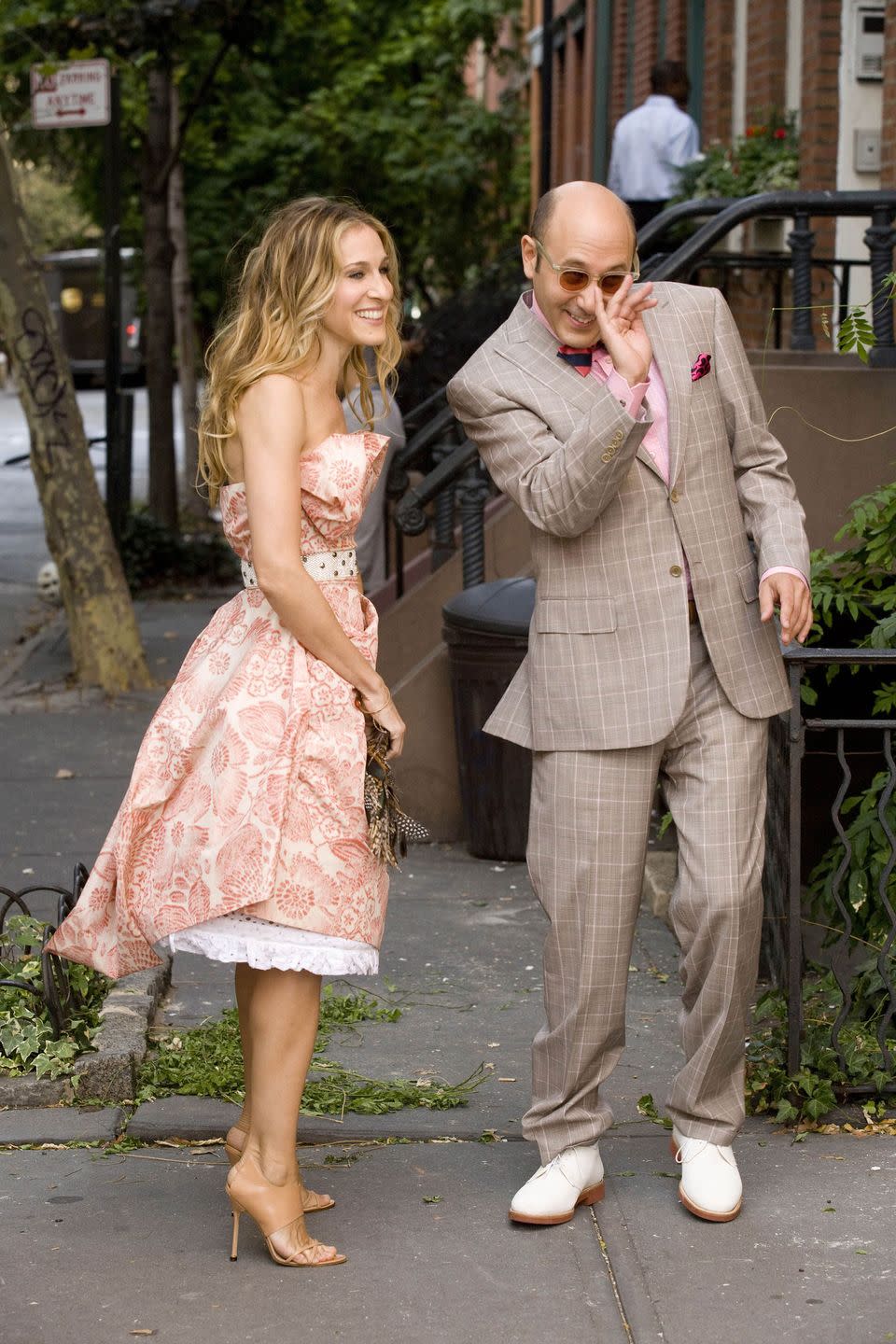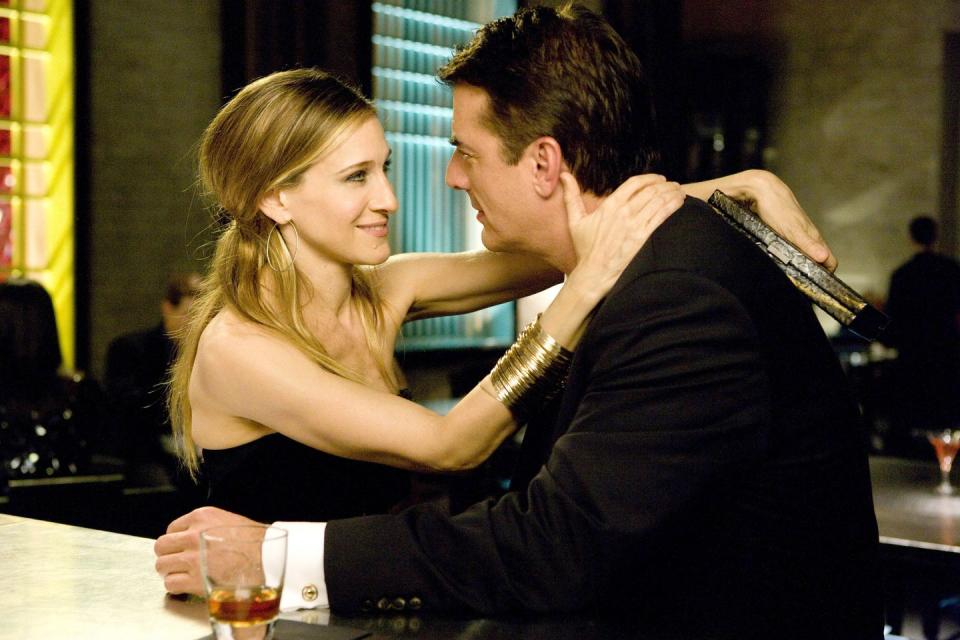Sex and the City: What it got right vs what it really didn't
It's been over two decades since Sex and the City first aired on our screens. In many ways it was ground-breaking – funny, clever and emotionally honest with a frank and warm look at female friendship, sex and single life. But as time has gone on, it's no longer the easy watching it once was. As a new SATC series is announced (albeit without Kim Cattrall's Samantha), we weigh up the good, the bad and the ugly about one of the most famous TV shows of all time.
THE GOOD
It changed our view of single life forever
Sex and the City starts when the women are in their thirties (one in their forties), and bar Charlotte, none of them were interested in marriage. All of them had jobs that they loved and found fulfilling and friends whom, for the most part, offered them love, fun and support. The show was among the first to say that you don’t need to settle down and marry the first man you meet after your 30th birthday. In fact, it said that sometimes no matter how perfect the man is, if you’re not in love (Aidan and Smith, for example), it still won’t work. It told us loudly that if it’s not right, then don’t settle. SATC was the first show to say that women needn’t pair off and get married to be happy; these women had fun, they drank, had sex and worked hard - and they loved their lives. It was a reminder that love and fulfilment can come in lots of different forms – it could be a career that you love, friends you adore or finding a place that feels like home - and that there's more to aspire to than the perfect romantic relationship. As Charlotte said to her best friends, “Maybe we can be each other’s soul mates.”
It fully passed the Bechdel test
Films and shows that tell the stories of women are still not as commonplace as they should be (in fact, it's the reason so many actresses are setting up their own production companies), but SATC was ahead of the game on this one, passing the Bechdel test with flying colours. It met the test’s first two criteria easily; the show featured more than two named female characters who actually spoke to one another (in fact, the relationships between the four protagonists was the foundation of the entire series). The second - do they talk about anything other than a man? The answer is in short, yes. Although Carrie, Miranda, Samantha and Charlotte did devote a lot of time talking about sex and their love interests, the show’s storylines went beyond standard chick-flick fare. We had Samantha’s cancer plot, Miranda's post-baby loneliness, Charlotte’s struggles with fertility and Carrie’s battle with unfair expectations as women age.

It was the first TV show to focus on female friendship
There would be no Girls had Sex and the City not come first. Yes, some of the puns and “I couldn’t help but wonders” were tedious, but the dialogue between these four women was unrivalled. We’d seen female friendship on screen before, but never was it the focus. These women were largely supportive and kind to one another. They made each other laugh. They loved each other enough to give them home truths even when they didn’t want to hear it (well, at least Miranda did). They were - for the most part - always there for one another and they seemed to value one another equally. The most unrealistic aspect was that, regardless of babies, jobs and partners, they had so much time to spend just hanging out. All in all though, there was a prevailing theme that, even if their careers and love lives were a mess, their four-way friendship was an ever-constant source of strength and safety.
It introduced high-low fashion to the mainstream
Carrie Bradshaw might have had a taste for luxury labels, particularly Manolo heels, but she also wore a tutu that cost the show’s costume designer $5 from a thrift store. Her signature name plate recalled market-stall bling, but she’d team it with head-to-toe Dolce & Gabbana or Gucci. For each of the characters, fashion was a form of self-expression, even if it was a little obvious. Samantha’s glorious brazenness and ease with who she was translated into sexy mini dresses and bright, bold head-to-toe colour. For Miranda, a hard-working lawyer, it was all about power suiting, dungarees and puffer jackers, and Charlotte expressed her love of tradition through timeless Audrey Hepburn-inspired shift dresses and unapologetically feminine, elegant looks.

THE BAD
It was maddeningly white
Strangely, for a show set in one of one of the most diverse cities in the world, there were very few characters who weren’t white. At one point, Samantha dates a Black record executive but their relationship is thwarted by the man’s sister who doesn’t want her brother to date a white woman, which all plays nicely into the “angry black woman” myth. In the first film, the producers sought to remedy this issue by casting Jennifer Hudson as Carrie’s grateful assistant, who was charged with sorting her post and looking thrilled when her boss bestowed her with hand-me-downs.

It had a simplistic representation of the gay community
There are only two types of gay men in Sex and the City – the camp man with a finesse for style and the bitchy gossip who doles out sharp one-liners. Samantha has a brief dalliance with a lesbian and Carrie with a bi-sexual man (which, she was mostly appalled and confused by), but the two biggest gay roles – Carrie and Charlotte’s best friends Stamford and Anthony - are perfect caricatures of what a gay man is – flamboyant, cutting and style obsessed. Then in the terrible films, the two – who hated each other in the show - get married because, obviously, there were no other gay men for them to end up with in New York.

The pervasive materialism
The films obviously took the biscuit on the materialism front, but looking back at the series, the foursome’s obsession with shopping and designer goods feels unrealistic. It goes without saying that few freelance fashion journalists would be able to afford the Jay-Z level of riches that Carrie enjoys. The apartment, the wardrobe, the glamorous lifestyle were heralded as a symbol of her success. And let us not forget the excruciating moment in the film when Carrie agrees to marry Big so long as he buys her a "really big" walk-in wardrobe. You just know that Carrie would have been a nightmare on Instagram. All four women live in a charmed white, wealthy bubble with little interest in anyone outside of their glossy, privileged lives.
Carrie was the worst friend
Although the show’s focus on female friendship was laudable, most women would have cut Carrie from their circle. Self-absorbed, narcissistic and whiney, Carrie slut-shamed Samantha, sent her boyfriend to look after Miranda when she was sick and famously refused to speak to Charlotte when she refused to lend her money. There was the time Miranda wanted an abortion and instead of being there for her friend. Carrie spent days walking round New York wondering what life would be like if she hadn’t had an abortion 13 years earlier. While Samantha was having chemotherapy, Carrie thought it appropriate to bore her with the minutiae of her fledgling relationship with Petrovsky.

Its tonally off ending
Although the show says it’s about friendship rather than men, the foursome do spend a lot of time talking about them. The tone-deaf ending didn't help. Despite Sex and the City’s long-standing message that there was more to life than getting married and settling down, all the characters did just that. Forget what the show said about toxic relationships not making you happy - Carrie and Big behaved in the complete opposite way to their characters would do ordinarily and ended up together. Despite Carrie’s independence and success, this petulant, vain and emotionally challenged man ends up rescuing her in Paris from another self-absorbed bore, Aleksandr Petrovsky. Let's not even think about the film, where Miranda was blamed for her husband’s infidelity because she was too busy working, or that the pinnacle of the movie sees Big building Carrie the ultimate wardrobe for which she should be forever grateful.
Cynthia Nixon, who was “devastated” by the scene, said it best: “It seemed to me that the show was so much about female empowerment and about women making their own choices and women standing up for what they wanted and supporting themselves.

“So, to me, to have this [scene] be a climax of the film, that your very wealthy husband built you a nice closet for your clothes, I thought, ‘Wow, that's not really what you love about the show, is it?’ Cause that's not what we were making it for.”
It might have given us a sell-out ending, but Sex and the City is still deserving of our respect. Not the films, they're unsalvageable, but the series with its four female leads, each one strong, intelligent and funny, is still worthy of our time 20 years on. It moved at least some of the stereotypes around women forward - and for that, we'll be forever grateful.
In need of some at-home inspiration? Sign up to our free weekly newsletter for skincare and self-care, the latest cultural hits to read and download, and the little luxuries that make staying in so much more satisfying.
Plus, sign up here to get Harper’s Bazaar magazine delivered straight to your door.
You Might Also Like

